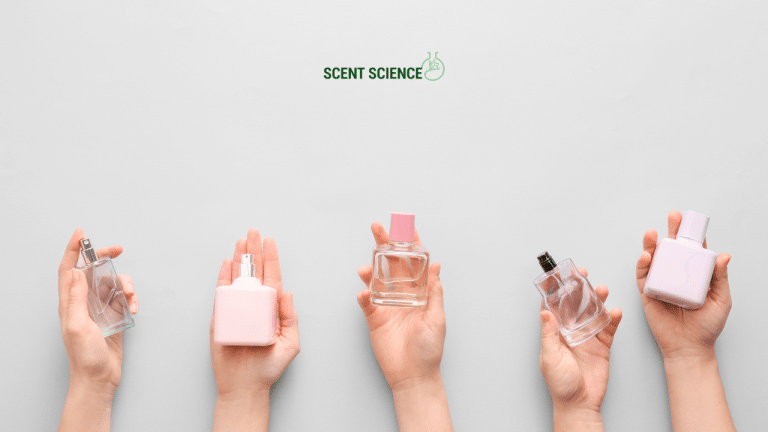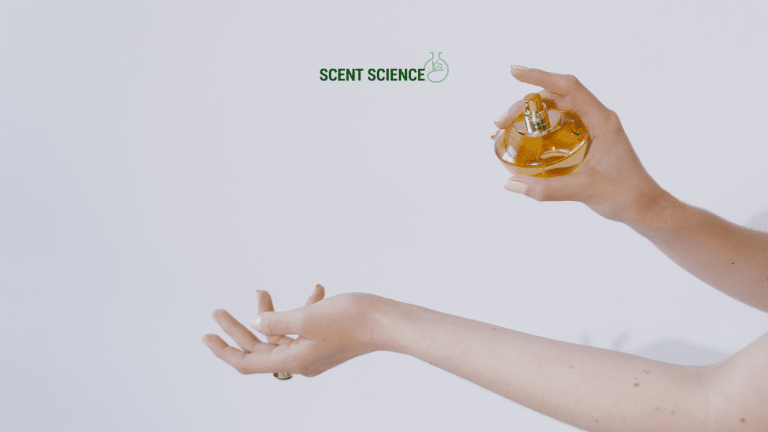In the bustling world we inhabit, each of us is often in search of a sanctuary—a place within where silence reigns amidst chaos. This inner peace is accessible through mindfulness, a practice that grounds us, enhancing our awareness and connection with the present moment. In recent years, fragrance meditation has emerged as a profoundly effective method to anchor our thoughts using scent as a focal point. Let me guide you through this sensory experience, enriched by plant essences and aromatic compounds, to discover how fragrance can be your gateway to mindfulness.
Table of Contents
ToggleThe Art and Science of Fragrance Meditation
Understanding Fragrance Meditation
Fragrance meditation is the practice of using scents to enhance mindfulness, which invites one into a state of focused presence. It engages multiple senses, primarily olfactory, to anchor thoughts, drawing upon the memory and emotion-stimulating properties of scents.
According to a study published in the journal *Frontiers in Psychology*, olfaction has a unique ability to trigger emotional responses instantly due to its direct pathway to the brain’s limbic system—the seat of emotions, memories, and arousal. This neurological direct link explains why certain smells can evoke profound memories or emotions almost instantaneously, making them particularly useful for mindfulness practices.
How Does Fragrance Meditation Work?
**Olfactory Processing**: When we inhale a scent, olfactory receptors in the nasal cavity send signals to the olfactory bulb—a part of the brain that processes smell. From here, messages are relayed to the limbic system, where the emotional weight of our experiences lies. Through this pathway, aromas tap directly into emotional states, offering a powerful tool for mood regulation and mindful presence.
**Impact on Emotions and Memory**: Fragrance meditation capitalizes on this scent-emotion-memory connection. For example, the scent of lavender can induce relaxation; peppermint might invigorate alertness; and citrus scents commonly enhance feelings of happiness.
**Anchoring Technique**: Consider scent your “anchor” during meditation. By associating specific fragrances with mindfulness and relaxation over time, the mere act of engaging with these scents can instantly draw the mind into a meditative state, fostering consistency and ease of practice.
Integrating Fragrances into Daily Mindfulness
Selection of Scents

The selection of appropriate fragrances is crucial for achieving the desired mindfulness effects. When designing your mindful scenting routine, aim for pure and high-quality essential oils or natural incense for the most authentic aromatic experience. Here are some powerful scents and their mind-calming properties:
- Lavender: Widely recognized for its calming properties, it aids in reducing anxiety and promoting serenity.
- Sandalwood: Known for grounding, it is beneficial during meditation and reflection.
- Frankincense: Encourages deep, meditative breathing and enhances awareness.
- Jasmine: Uplifts mood and alleviates stress, creating a rejuvenating sensory experience.
- Peppermint: Stimulates clarity and concentration, beneficial for mental focus.
Crafting Your Fragrance Meditation Routine
- Create a Dedicated Space: Choose a quiet, comfortable area free from distraction. Ambiance is essential, so consider lighting and comfort.
- Select Your Fragrance: Choose a scent or blend that aligns with your current emotional needs. Diffusers or aromatherapy lamps are great ways to disperse essential oils evenly.
- Set an Intention: Before starting your session, focus your mind on a specific intention—whether it’s reducing stress, enhancing focus, or simply being present.
- Breath-Focused Meditation with Scent Integration:
- Close your eyes and take deep breaths. Slowly inhale the fragrance, noticing how it makes you feel.
- Sync deep breathing with the inhalation of the scent, noticing its journey from the nostrils to the lungs.
- Reflect on the feelings or memories it evokes, and converate on how your physical and emotional states subtly shift.
- 5. **Conclude with Gratitude: Spend a few moments post-meditation acknowledging the present moment and expressing gratitude for the inner peace and insights gained.
Practicing Fragrance Meditation: A Step-by-Step Walkthrough
Let’s perform a basic fragrance meditation with lavender, showcasing its calming abilities:

**Step 1: Preparation**
- Find a quiet, comfortable space where you can meditate without interruption. Dim lighting and soothing background music can enhance tranquility.
**Step 2: Setting the Mood**
- Use a diffuser to permeate the space with a few drops of lavender essential oil. You may also apply a drop to your wrists and temples.
**Step 3: Breathing Exercise**
- Sit comfortably with a straight back.
- Close your eyes and hold your hands resting on your thighs with palms up.
**Step 4: Sensory Examination**
- As the lavender wafts through the air, take a deep breath in through your nose, feeling the fragrance fill your lungs.
- Focus on how the scent moves and how your body responds. Notice tensions dissipating with each exhalation.
**Step 5: Anchor Efforts with Repetition**
- With each inhalation, repeat a calming phrase like “I am peaceful” or “I am present,” aligning each word with your breath.
**Step 6: Reflection and Gratitude**
- Gradually bring awareness back to your surroundings. Conclude with a moment of gratitude for the sense of peace achieved.
Technical Analysis: Fragrance’s Psychological and Physiological Impacts

Psychological Impact of Scents
According to a comprehensive report published in *Psychological Science*, mood states can be markedly influenced by scents. The study highlights that olfactory cues significantly alter mood, stress, and cognitive performance due to olfaction’s interplay with emotional centers in the brain.
- Mood Enhancement: Scents associated with positive experiences trigger serotonin release, which is a neurotransmitter integral to feelings of well-being.
- Memory and Emotion Connection: Deep-rooted memories linked with particular scents enable rapid emotional interplay, which is beneficial in therapeutic settings, especially for those with anxiety or mood disorders.
Physiological Reactions Induced by Aromas
A 2023 whitepaper on aromatherapy practices championed the role of aromatic compounds in regulating the autonomic nervous system. Some physiological responses include:
- Reduced Heart Rate and Blood Pressure: Scents like lavender and rose have shown potential in clinical settings to lower physiological stress markers.
- Enhanced Sleep Quality: Emanating olfactory cues before bedtime, specifically with substances like chamomile and bergamot, significantly improve sleep latency and quality.
A Case Study: Fragrance Meditation’s Impact on Health Professionals
In a 2021 case study conducted by the National Center for Biotechnology Information (NCBI), health professionals experiencing high levels of workplace-induced stress participated in a fragrance meditation program. Over eight weeks, participants engaged in bi-weekly aromatherapy sessions. Post-program assessments revealed significant reductions in reported stress levels, improved mood, and enhanced job satisfaction, alluding to fragrance meditation’s profound potential across high-stress professions.
Conclusion: Embracing Scent as a Sustainable Mindfulness Solution
Fragrance meditation is more than a feel-good practice; it is a potent and natural method for achieving mindfulness. By understanding and implementing aromas strategically, anyone can cultivate daily rituals that stabilize emotions, heighten awareness, and promote serenity in our ever-moving world.
In the broader landscape of mindful practices, fragrance shines as both an anchor and ally—a harbinger of inner peace amid the external tumult. By tying mindfulness to scent, we weave together sensory richness with cognitive clarity, crafting reflective spaces available within a breath’s reach.
Thus, embrace fragrance meditation as part of your holistic wellness journey; for as the fragrance envelopes the senses, it tactilely guides the mind to stillness and presence. With each inhalation, open gateways to introspection, emotional healing, and resilience—one serene breath at a time.
Frequently Asked Questions
What are the benefits of using a hair mask in my hair care routine?
Using a hair mask can provide several benefits, including hydration, smoothing, strengthening, curl definition, heat protection, and damage repair. Hair masks infuse the hair with moisture, help coat the hair shaft to seal split ends, reduce breakage, and protect the hair from heat styling and environmental damage[1][4].
What ingredients should I look for in a hair mask?
Effective hair masks often include ingredients such as coconut oil, argan oil, shea butter, honey, avocado oil, green tea, and coconut water. These ingredients provide nourishment, moisturize, and protect the hair, offering benefits like softening, moisturizing, and protecting against damage[2][5].
How often should I use a hair mask in my routine?
You should use a hair mask whenever your hair feels dry, unmanageable, or in need of intense hydration. This can vary depending on your hair type and needs, but generally, using a hair mask once or twice a week can help maintain healthy and moisturized hair[1][4].
How do I apply a hair mask for the best results?
To apply a hair mask effectively, shampoo your hair first, then apply the mask, focusing especially on the ends where hair tends to be the most damaged. Leave the mask on for anywhere from 10 minutes to overnight, depending on the type of mask and your hair’s needs[1][4].
References







